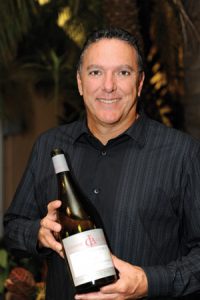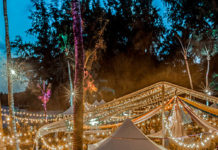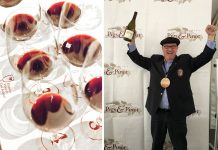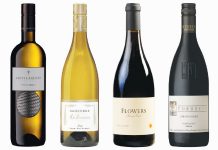Story by Charles Fredy
 A few years ago, three colleagues and I went to a restaurant in Paris famous for its caviar. While five waiters stood at our beck and call, we enjoyed a bottle of fine French champagne paired with caviar and its accompaniments: onion, chopped hard-boiled egg, cream, capers and some very expensive blinis (buckwheat pancakes). The cost of this repast was around 1,300 Euros, or about $200 per person. We left completely hungry, and bought some fruit, pâté and cheese—about all we could still afford—to take back to the hotel. But that deliciously decadent “meal” had made us feel we’d experienced what royalty and movie stars do.
A few years ago, three colleagues and I went to a restaurant in Paris famous for its caviar. While five waiters stood at our beck and call, we enjoyed a bottle of fine French champagne paired with caviar and its accompaniments: onion, chopped hard-boiled egg, cream, capers and some very expensive blinis (buckwheat pancakes). The cost of this repast was around 1,300 Euros, or about $200 per person. We left completely hungry, and bought some fruit, pâté and cheese—about all we could still afford—to take back to the hotel. But that deliciously decadent “meal” had made us feel we’d experienced what royalty and movie stars do.
You can do the same, and for about a quarter of the cost. The trick is to make the pairing memorable.
One of my favorites is pairing slices of glazed sautéed mango and a fresh fois gras from the gourmet shop with a late-harvest botrytis dessert wine. Order a Château d’Yquem Sauternes at an upscale hotel, and a 375 ml. bottle will set you back about $300. But you can approximate that experience with a Royal Tokaji Aszu (5 Puttonyos, Hungary) for about $45 for a 500 ml. bottle; or a Peter Lehmann Botrytis Semillon (Barossa Valley, South Australia) for as little as $20 for a 375 ml. bottle. Because these dessert wines are extremely sweet, a little goes a very long way.
What these three wines have in common is Botrytis cinerea, a fungus found in a small percentage of late-harvest grapes. Botrytis leaches most of the water from the grape, and in so doing, concentrates the sugars. What makes it expensive is that botrytis develops only in specific parts of certain vineyards in certain places in the world, and only in years that have the right conditions. When it happens, pickers comb through their vineyards four or five times, carefully selecting individual berries and bunches of grapes in a labor-intensive and time-consuming process. These “noble-rot” grapes yield only a third of the juice of a normal harvest, but what remains is pure nectar.
If you don’t care for sweet dessert wines, try my “Paris pairing” of champagne and caviar. Such combinations are both festive and so unusual as to be truly memorable. Here are a few champagnes I recommend.
- Domaine Carneros, Brut, 2004; 92 points from Wine News; approximate retail $28.
- Charles Heidsieck, Brut, NV; 92 points from Wine Spectator; approximate retail $58.
- Charles Heidsieck, Blanc des Millenaires, 1995; 95 points from Wine Spectator; approximate retail $115.
- Perrier-Jouet, Fleur de Champagne, 1999 (a favorite of Queen Victoria, the Swedish royal family and the King of Belgium); approximate retail $135.
- Taittinger, Comtes De Champagne, Blanc de Blancs, 1998; 95 points from Wine Spectator; approximate retail $275.
Cheers!





